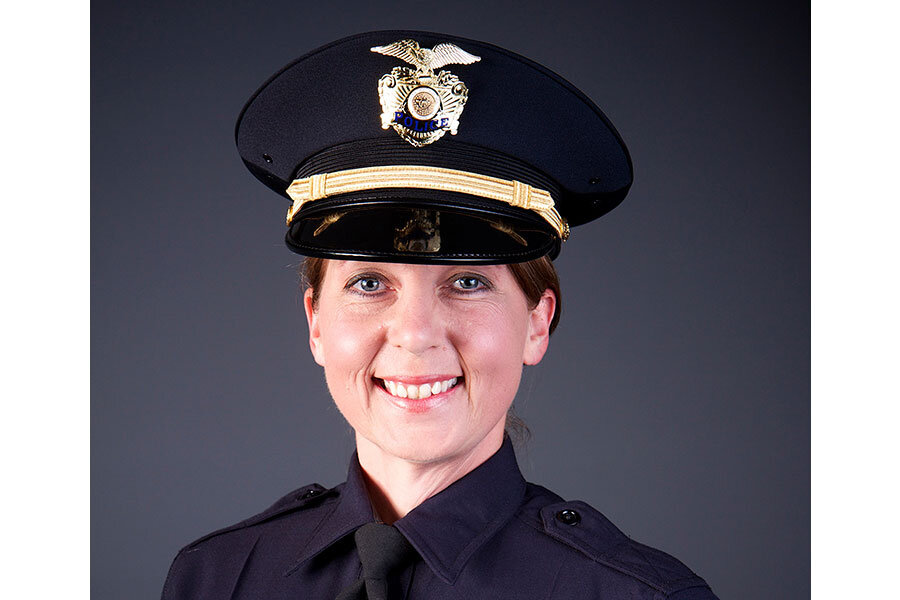In wake of Tulsa shooting, a new look at role of policewomen
Loading...
In the long string of fatal confrontations between police officers and black males over the past two years, one element has been conspicuously absent:
Female officers.
With few exceptions, the high-profile fatal encounters with unarmed African-Americans have involved male officers. But on Friday, Tulsa police officer Betty Shelby shot Terence Crutcher, an unarmed black man whose van was stopped in the middle of a road.
That encounter is unusual for two reasons. First, female police officers are not that common in local police departments: making up only about 12 percent of the local police force nationally. Large city police forces average about 15 percent; in small jurisdictions, female representation is much lower.
Second, 40 years of research suggests that women officers are less likely (or at least no more likely) to use excessive force than their male counterparts and are better able to defuse tense situations. They tend to use communication rather than force when suspects become defiant.
The research is not unanimous. Another study finds that departments with higher percentages of female officers have more reported police homicides – though some experts say that's because women bring in a greater culture of accountability and honest reporting.
Whatever the case, as police shootings of minorities have become highly visible, advocates of female policing have argued that cities at the very least should better teach the communication skills at which studies show women excel. And they could also just hire more women.
The challenge is that the pool of women is small and many police departments are not making special efforts to hire them. After climbing from 7.6 percent in 1987 to nearly 12 percent in 2007, the percentage of female officers has remained virtually unchanged.
“There's no push at the top to recruit women,” says Penny Harrington, former chief of police of Portland, Ore., and now retired. And given the portrayal of police work on TV shows – “it’s sirens on all the time and shootouts, which is simply not true – [women] think that it's too dangerous and they wonder if they can handle it. You really have to sell the job.”
Trouble in Tulsa
On Friday, Tulsa officer Shelby was on her way to another case when she happened upon Mr. Crutcher, who had abandoned his SUV in the middle of the road and told another motorist that it might blow up. As the first officer on the scene, according to her attorney, she asked Crutcher to take his hands out of his pockets. He did and then raised his hands, ignoring her questions.
There is plenty of research showing that female officers, on average, are good at defusing such tense situations.
“Virtually every indicator examined by the commission establishes that female LAPD officers are involved in excessive use of force at rates substantially below those of male officers,” concluded the Christopher Commission report on police brutality formed in the wake of the 1991 Rodney King beating at the hands of officers of the Los Angeles Police Department. “Many officers, both male and female, believe female officers are less personally challenged by defiant suspects and feel less need to deal with defiance with immediate force or confrontational language.”
A five-year veteran of the force and trained in drug-recognition, Shelby intended to arrest Crutcher because she felt he was high on drugs. When other officers arrived, various police videos show Crutcher walking toward his SUV with his hands still up. When he reached the car door and lowered his hands, Shelby shot him as another officer discharged a stun-gun. According to her attorney, Shelby thought he was reaching for a gun inside the SUV. An attorney for Crutcher’s family disputes that account, saying the window was closed.
No gun was found, according to police; a vial of PCP was.
“It was a lousy police work from the beginning,” says Ms. Harrington, the former police chief. “Going for a gun and having a gun in his hand are two different things.” The officers could easily have tackled him before he could have reached a weapon, she adds.
“Shootings like we see in Tulsa are extremely rare,” says Cara Rabe-Hemp, a professor of criminal justice at Illinois State University in Normal, Ill., who has researched the subject. “What the research suggests is that women are better communicators.... We've never ever found a circumstance where women use more force,” on average, than men do.
Contrary view
But there's another point of view. When researchers look at police departments as a whole, rather than individuals, there's more reported violence when there are more female officers. A 2003 study, for example, found that police forces with more women actually generate more reports of police-generated homicides than those with fewer women.
How can that be? One theory from a 2014 study suggests that this is because the growing presence of women disrupt the status quo within departments and prompt them to adopt more formalized procedures, which increases the reporting of such incidents.
In either case, women officers are less prone to wrongful death suits and complaints than their male counterparts. The average male officer was more than eight times more likely to have an allegation of excessive force sustained against him than the average female officer, according to a 2002 study of seven major city police departments by the National Center for Women & Policing. The average male also received two to three times more complaints of excessive force than his female counterpart.
But the difference isn't genetic and the communication skills of women can be taught, these researchers add.
"The lesson for us is that we've really got to look at every piece of the police hiring process," Harrington says, "first and foremost training and who are we hiring.... How are we screening them? How are we supervising."






